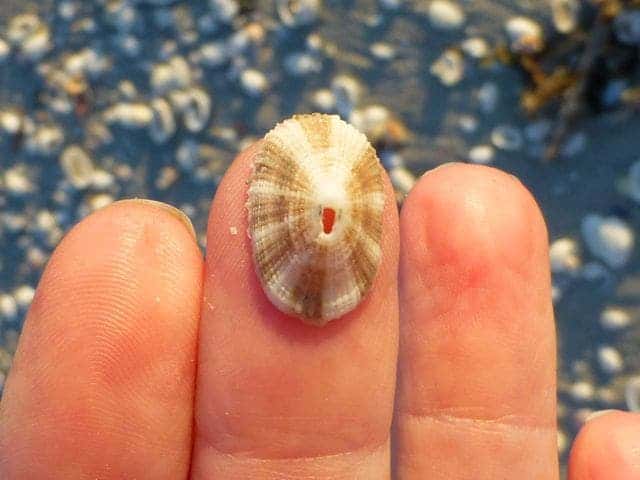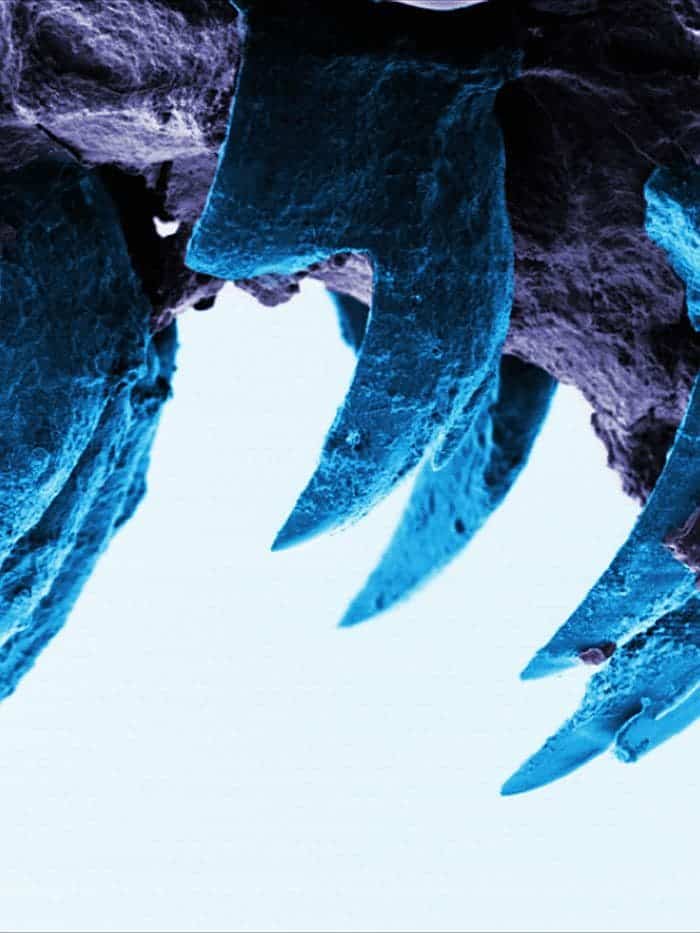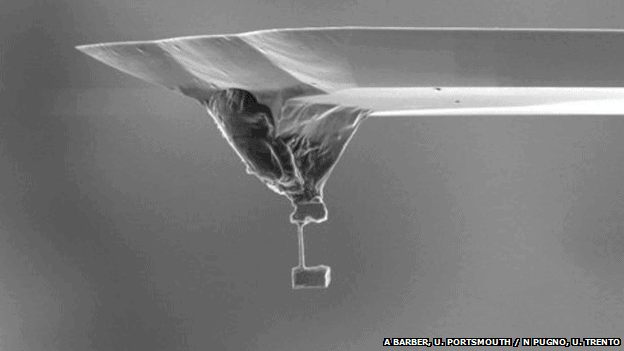According to a new study, limpet teeth may be the strongest material known to man, stronger than spider silk or kevlar. The potential applications for use are virtually endless, especially as the strength isn’t affected by the material’s size.

“Limpet” is a common name given to aquatic snails with shells broadly conical in shape. It’s not necessarily a scientific term, and it’s used out of convenience to describe any gastropod whose shell has no obvious coiling. Researchers from the University of Portsmouth have discovered that limpets have incredibly strong teeth – they may actually be the strongest material in the world.
Professor Asa Barber from the University’s School of Engineering led the study. He said:
“Nature is a wonderful source of inspiration for structures that have excellent mechanical properties. All the things we observe around us, such as trees, the shells of sea creatures and the limpet teeth studied in this work, have evolved to be effective at what they do. Until now we thought that spider silk was the strongest biological material because of its super-strength and potential applications in everything from bullet-proof vests to computer electronics but now we have discovered that limpet teeth exhibit a strength that is potentially higher.”
Limpets need the high-strength teeth to cling on to rock surfaces and remove algae for feed when the tide is in. For this study, researchers used atomic force microscopy to test the strength of the teeth. Atomic force microscopy is a very high-resolution type of scanning probe microscopy, with a resolution on the order of fractions of a nanometer, much higher than optic microscopy.
They found that the teeth contain a mineral called goethite – an iron bearing hydroxide mineral. Goethite isn’t particularly strong, but goethite fibers are laced through a protein base in much the same way as carbon fibres can be used to strengthen plastic. The mineral forms as the limpet grows, but the strength of the teeth didn’t seem impacted by the limpets’ age.

“Limpets need high strength teeth to rasp over rock surfaces and remove algae for feeding when the tide is in. We discovered that the fibres of goethite are just the right size to make up a resilient composite structure. This discovery means that the fibrous structures found in limpet teeth could be mimicked and used in high-performance engineering applications such as Formula 1 racing cars, the hulls of boats and aircraft structures. Engineers are always interested in making these structures stronger to improve their performance or lighter so they use less material.”
Indeed, the applications for such a strong material are basically endless – strong materials are needed in most industries, from computer electronics to the car and plane industries, strong materials are a godsend. But what makes it even more spectacular and more applicable to industry is the fact that the material’s strength is not dependent on its size – in other words, you can scale it up or make it as tiny as you want.
“Generally a big structure has lots of flaws and can break more easily than a smaller structure, which has fewer flaws and is stronger. The problem is that most structures have to be fairly big so they’re weaker than we would like. Limpet teeth break this rule as their strength is the same no matter what the size.”

The material the team tested in the lab was approximately 100 times thinner than a human hair. For future studies, they will have to apply more tests under more sizes and see what factors can further amplify (or threaten) the material’s strength. So far, the shape seems to be very important.
“The testing methods were important as we needed to break the limpet tooth. The whole tooth is slightly less than a millimetre long but is curved, so the strength is dependent on both the shape of the tooth and the material. We wanted to understand the material strength only so we had to cut out a smaller volume of material out of the curved tooth structure.”
It will be quite a while before we actually start seeing practical applications for limpet teeth, but the fact that scientists found such a strong material in an unexpected place is definitely thrilling and opens new perspectives.
The research was published today in the Royal Society journal Interface.
Was this helpful?



